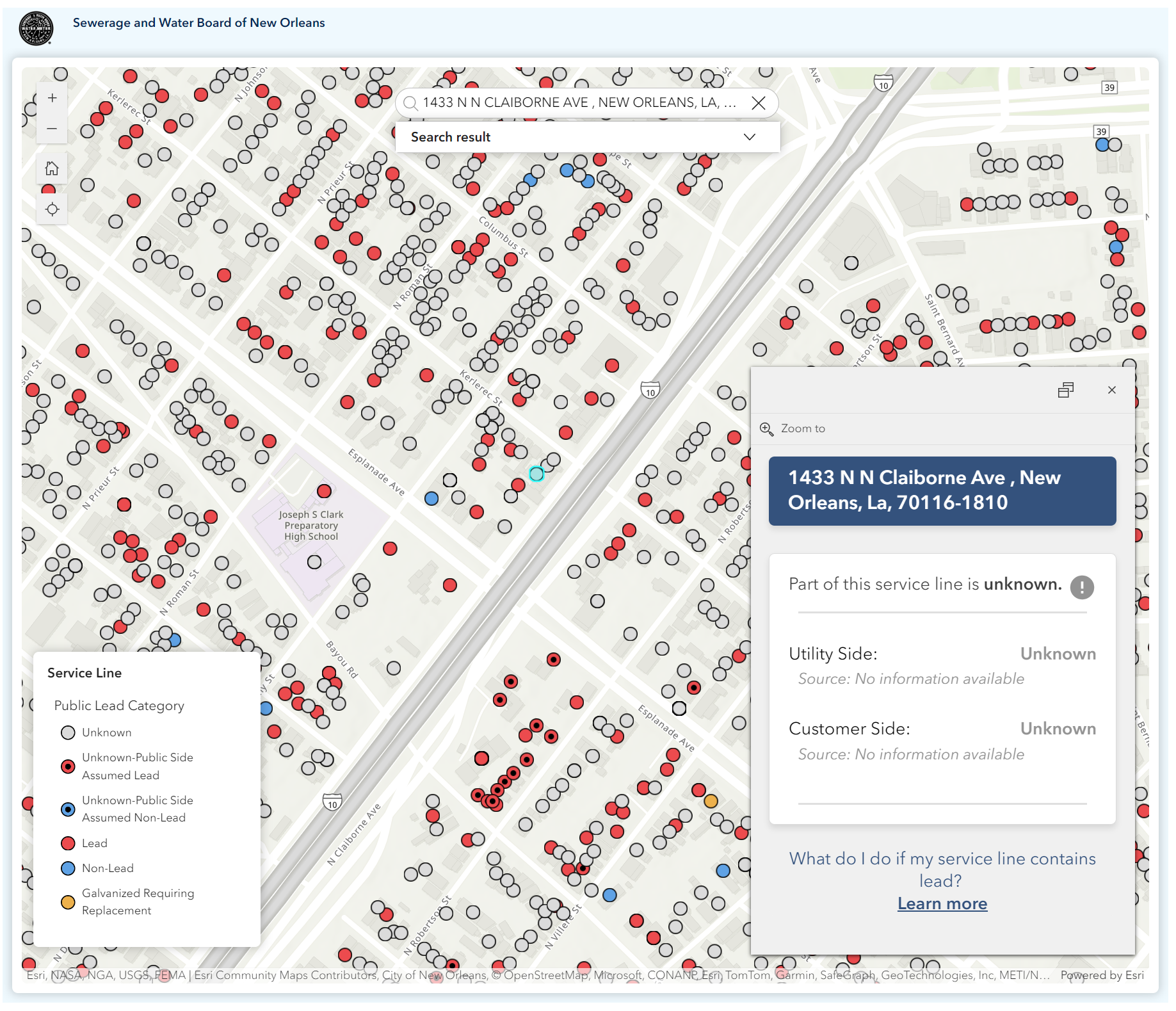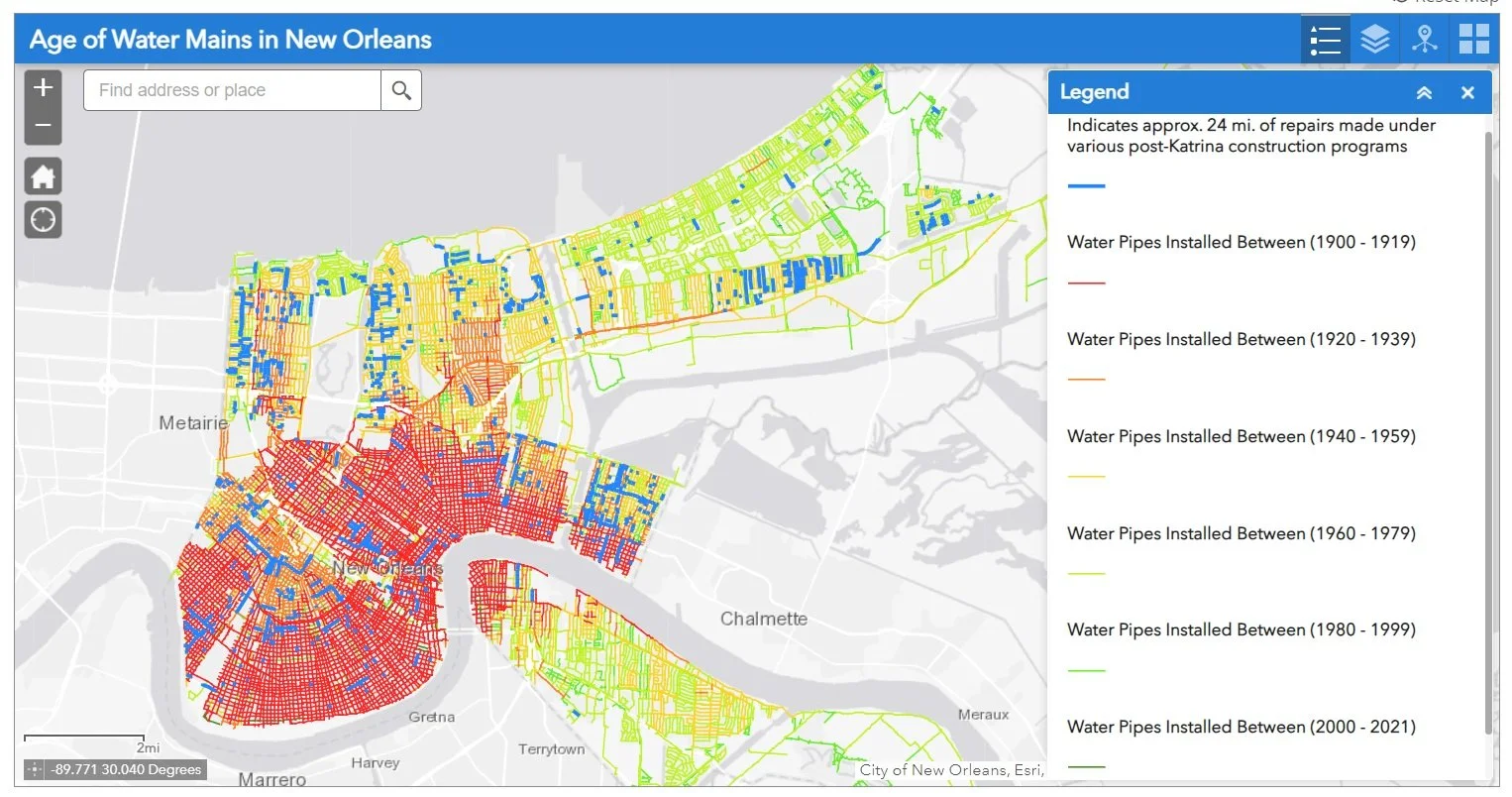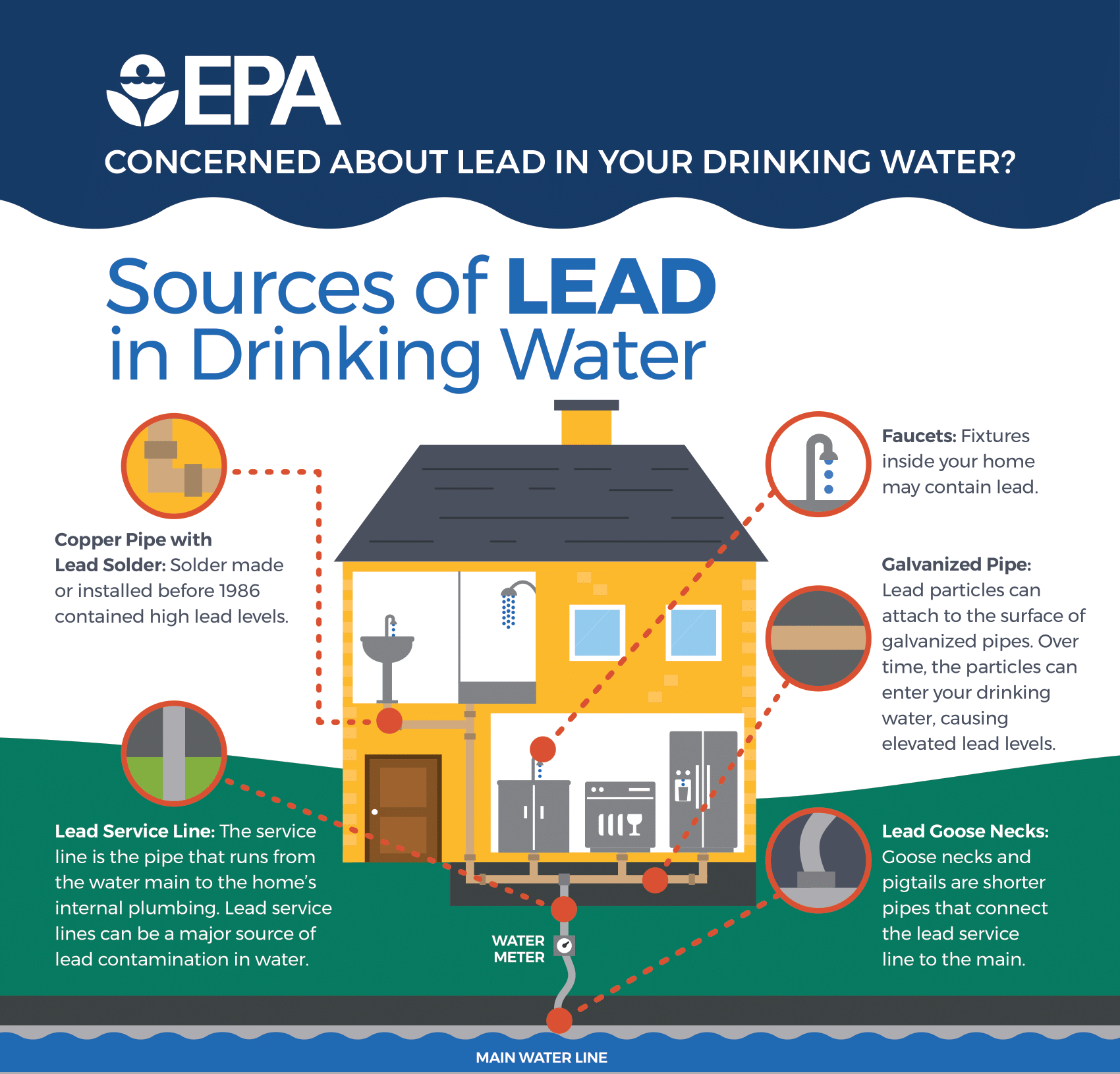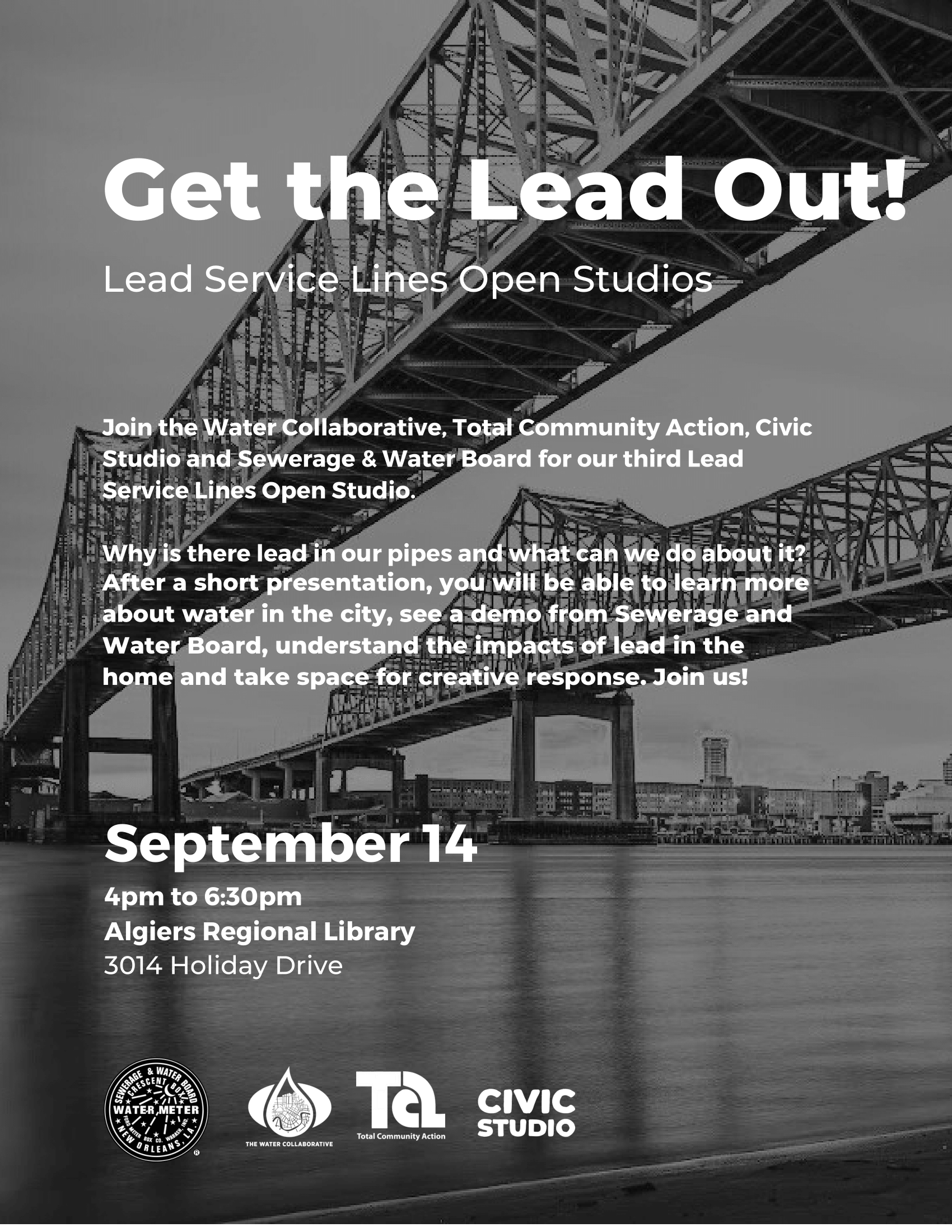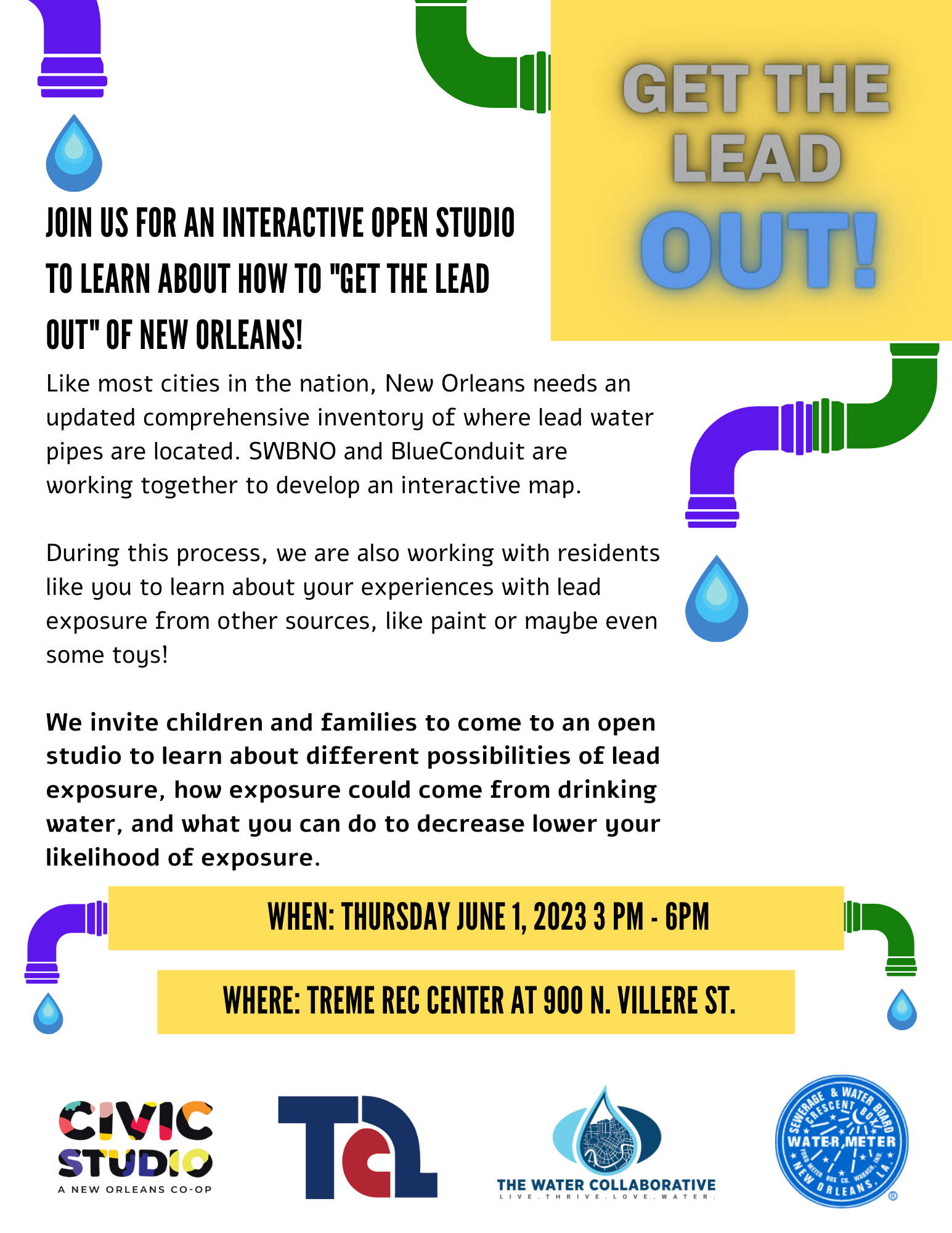Community Lead Awareness Program
About the Project
The Water Collaborative (TWC) is dedicated to advancing lead advocacy efforts through our 2024 Lead Awareness programming, a cornerstone in our commitment to ensuring clean and safe water for all New Orleans residents. Our goal is to educate about lead exposure risks, promote proactive contamination reduction, and advocate for system-wide water quality improvements.
Clean water is essential not only for meeting basic needs but also for protecting public health and improving the quality of life in communities. Every individual deserves access to safe water, free from harmful contaminants.
Together, we can make a difference and ensure that clean water remains a fundamental right for every resident, commuter, and visitor who enters our community.
Objectives
Increase community awareness of health risks linked to lead exposure.
Strengthen connections among community groups, decision makers, and utility leaders.
Improve residents' understanding of their home water pipe composition and federal regulations.
Educate the community about strategies and filters to reduce lead exposure.
Raise awareness about the impact of disruptions on lead pipes and advocate for proactive measures to minimize risks.
Create a secure and equitable water system accessible to every resident of New Orleans.
For questions or concerns regarding this project - email Taya Fontenette at taya@nolawater.org.
“There is no safe level of lead in drinking water.”
Background
Lead is a highly toxic metal that can cause a range of serious health issues, particularly in vulnerable populations such as children and pregnant women. Even at low levels, lead exposure can lead to developmental delays, learning disabilities, and behavioral problems. The Environmental Protection Agency (EPA) addressed this concern by implementing regulations like the Lead and Copper Rule (LCR) in 1991, which establishes standards for lead and copper levels in drinking water and mandates water utilities to monitor and treat their water to ensure compliance with safety standards.
Before the 1980s, lead lines were commonly installed for drinking water across the United States, and even though they were federally outlawed, previously installed lines were not required to be removed. Water service lines, responsible for delivering water to individual residences, consist of both private lines owned by residents and main lines managed by the water utility. While water leaving distribution systems is not contaminated with lead, the presence of lead lines can still contribute to contamination within the home. Complete removal and replacement of service lines represent the most effective approach to eliminating lead exposure.
The EPA reported an estimated 266,984 lead service lines in Louisiana in September 2023. Given New Orleans' historic water network, it is likely to bear a significant portion of this burden, highlighting the urgent need for comprehensive measures to replace the lead pipes in our community's water supply.
New Hampshire Department of Environmental Services. How to Address Lead in Drinking Water.
U.S. Environmental Protection Agency. Guidance for Developing and Maintaining a Service Line Inventory.
What are the types of service lines?
LSLR Collaborative Identifying Service Line Material
Lead
Lead was commonly used before its ban in the 1980s due to its durability and malleability. It poses significant health risks as it can leach into drinking water, leading to serious health issues. Efforts are ongoing to replace the estimated 9.2 million remaining lead pipelines.
Galvanized Steel
Commonly used in homes before the 1960s, galvanized steel is initially durable but corrodes over time, leading to reduced water flow and potential contamination. It is rarely used in new installations today.
Copper
Copper has been a popular choice for water service lines due to its excellent durability and resistance to corrosion. It is reliable and provides a long service life, making it a preferred material for both old and new installations. Copper pipes do not pose the same health risks as lead and can withstand high temperatures; however, it can be more expensive than other materials.
Plastic (PVC, CPVC, PEX)
Plastic pipes are popular in modern plumbing due to their resistance to corrosion, lightweight nature, and ease of installation. PVC is used for cold water, CPVC for both hot and cold water, and PEX for its flexibility and durability. The main advantage of plastic pipes is their cost-effectiveness and versatility, although they may not be suitable for very high-temperature applications or areas requiring high structural strength.
What are the effects of lead exposure?
City of Biddeford, Maine. Health Effects of Lead Poisoning.
Lead exposure can have a wide range of adverse health effects, affecting both children and adults. Here are some of the key effects:
In Children
Cognitive and Developmental Issues: Lead exposure can impair cognitive development, resulting in lower IQ, attention deficits, learning difficulties, and behavioral problems.
Physical Symptoms: Children may experience fatigue, irritability, weight loss, abdominal pain, vomiting, and constipation.
Severe Cases: High levels of exposure can lead to anemia, kidney damage, hearing loss, and in extreme cases, seizures, coma, or death.
In Adults
Cardiovascular Problems: Lead exposure can increase the risk of high blood pressure and hypertension.
Neurological Effects: It can cause memory loss, difficulty concentrating, mood disorders, and increased risk of depression and anxiety.
Musculoskeletal Issues: Lead can cause joint and muscle pain, and general weakness.
Reproductive Effects: In men, it can reduce sperm count and affect fertility. In women, it can cause menstrual irregularities and affect pregnancy.
In Pregnant Women
Effects on Pregnancy: Lead can cross the placental barrier, leading to miscarriage, stillbirth, and preterm birth.
Fetal Development: Prenatal exposure to lead can result in low birth weight, slowed growth, and developmental delays in infants.
Where are the lead lines in New Orleans?
On October 11, 2024, Sewerage and Water Board of New Orleans (SWBNO) released an interactive city-wide inventory that identified 15,000 known lead service lines and 119,000 lines made from unknown materials. To create the inventory, SWBNO partnered with BlueConduit, a water analytics company specializing in machine learning.
Here is an explanation of the legend provided on the inventory:
Unknown: The material of the service line is undetermined.
Unknown-Public Side Assumed Lead: Based on probability modeling, there is an 80% or higher chance that the service line on the public side is lead.
Unknown-Public Side Assumed Non-Lead: Based on probability modeling, there is a 20% or lower chance that the service line on the public side is lead.
Lead: The service line has been verified as lead through historical records or physical inspections.
Non-Lead: The service line has been confirmed as non-lead through verified records or inspections.
Galvanized Requiring Replacement: The service line is galvanized steel, which requires replacement.
Residents can now look up the material of their service line here on SWBNO’s Lead Awareness page.
In compliance with the 2024 Lead and Copper Rule Improvements (LCRI), SWBNO is required to replace all lead and galvanized service lines by 2037. The LCRI also mandates annual updates, validation procedures, and replacement rates based on the baseline inventory.
Frequently Asked Questions
-
Install an NSF Standard 53-certified water filter to reduce lead from drinking water. Remember to regularly replace the filter according to the manufacturer's instructions to ensure it continues to work effectively.
Use cold water for drinking and cooking. Lead dissolves more easily in hot water, so always use cold water for cooking, drinking, and preparing baby formula.
Run water for 1-2 minutes to help flush out any lead that may have leached into stagnant water.
If you suspect lead contamination, regularly testing your water ensures you know your lead levels and can take action based on the results.
Consider replacing lead service lines and any plumbing fixtures containing lead with safer, non-toxic alternatives.
-
When considering lead filters, prioritize those certified under NSF Standard 53 for effective lead reduction. These filters include pitcher, faucet-mounted, and under-sink varieties, each catering to different needs, space availability, and filtration preferences. Regular replacement of filters every few months is crucial to maintain peak performance and ensure continued protection against contaminants.
While filters offer convenience, it's important to acknowledge that full lead service line replacement remains the most effective long-term solution for preventing lead exposure.
To explore low-cost filter options explore our blog, Protecting Your Water with Lead Filtration Systems.
-
The primary regulation overseeing lead exposure in drinking water is the EPA's Lead and Copper Rule (LCR), which was first established in 1991. This rule sets limits on the concentrations of lead and copper in public drinking water systems. The Lead and Copper Rule Improvements (LCRI) were finalized in October 2024 and will go into effect in 2027. The LCRI mandates the complete removal of lead service lines across the country by 2037.
Read our policy brief series, Navigating the Changes, to learn more about the original rule and the latest updates.
-
Federal: The Environmental Protection Agency (EPA) is responsible for establishing national standards, including the Lead and Copper Rule, to regulate lead and copper levels in drinking water across the United States.
State: The Louisiana Department of Health (LDH) oversees the implementation and enforcement of the Lead and Copper Rule within the state's borders. They work closely with all local agencies to ensure compliance and monitor water quality.
Local: The Sewerage and Water Board of New Orleans oversees water quality regulations at the municipal level, conducting regular lead and copper testing and corrosion control. They also provide outreach and education to residents. SWBNO reports to the Louisiana Department of Health, which, in turn, reports to the EPA. -
The current EPA standards for lead and copper in drinking water are 15 parts per billion (ppb) for lead and 1.3 parts per million (ppm) for copper.
In 2027, the Lead and Copper Rule Improvements will lower the lead action level to 10 ppb.
-
Visit Sewerage and Water Board's (SWBNO) service line inventory and to identify your service line materials. Visit their website here.
Check any inspection or building reports for your residence, which may include details about materials used for plumbing, such as internal plumbing, faucets, and the service line.
A licensed plumber or home inspector can visually inspect your plumbing system to identify the presence of lead pipes.
Learn More About Your Water and Health
Resources
*Available in English, Arabic, Chinese Simplified and Traditional, French, Korean, Russian, Spanish, Somali, Tagalog and Vietnamese
Environmental Protection Agency (EPA)
Centers for Disease Control and Prevention (CDC)
Neighboring Parishes
Jefferson
Utility: Jefferson Parish Water Department
Offers free lead testing for qualifying residents through the Lead-Safe Housing Program, focused more on lead-based paint.
Eligibility requires homes built before 1978, with children under 6 or pregnant women, and income below 80% of the median income.
Plaquemines
Utility: Plaquemines Parish Water Department and Inframark
No information is available regarding free lead testing or free filters.
St. Bernard
Utility: St. Bernard Parish Waterworks
No information is available regarding free lead testing or free filters.
Water quality reports available since 2008.




